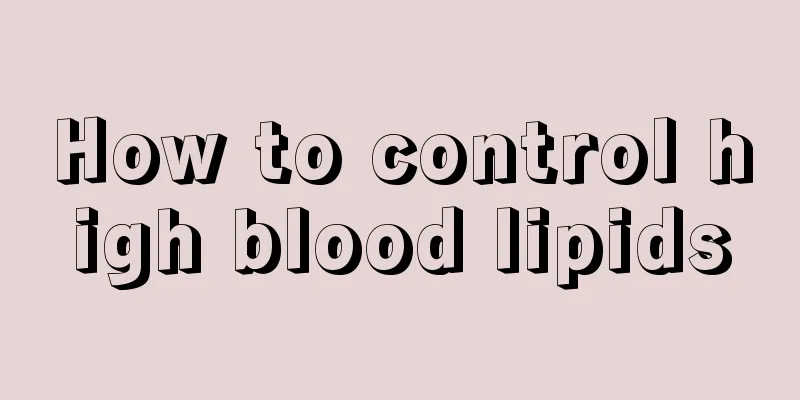The main components and functions of pancreatic juice

|
People may not be very familiar with the main components and functions of pancreatic juice. Pancreatic juice is also a component of digestion and plays an important role in the digestion and absorption of food. Sometimes when we eat pasta, we feel that it becomes sweeter the more we chew. This phenomenon is mainly because pancreatic amylase breaks down starch into maltose. Let's take a closer look at the main components and functions of pancreatic juice. Pancreatic juice generally refers to a colorless, odorless alkaline solution secreted by the exocrine part of the pancreas of the human body. The daily secretion of an adult is 1 to 2 liters. The inorganic substances in pancreatic juice are mainly water and bicarbonate. Bicarbonate is secreted by the wall cells of the pancreatic ductules. Its main function is to neutralize gastric acid entering the duodenum, provide the most suitable alkaline environment for the activity of various digestive enzymes in the small intestine, and protect the intestinal mucosa from acid erosion. The organic matter in pancreatic juice is a variety of digestive enzymes that can act on the three food components of sugar, fat and protein, making it the most important digestive juice. Pancreatic amylase breaks down starch into maltose, and pancreatic maltase breaks down maltose into glucose. Pancreatic lipase breaks down neutral fat into sugars 1. Water and HC03-: HC03- neutralizes gastric acid, protects the intestinal mucosa, and provides a suitable pH environment for digestive enzymes in the small intestine. 2. Proteolytic enzymes: The more important proteolytic enzymes in pancreatic juice are trypsin, chymotrypsin and carboxypeptidase. Trypsin and chymotrypsin can hydrolyze proteins into polypeptides of varying sizes, and carboxypeptidase can hydrolyze polypeptides into amino acids. Enterokinase in the small intestinal fluid can activate trypsinogen, trypsin can self-activate trypsinogen, and can also activate chymotrypsinogen into active chymotrypsin. 3. Pancreatic amylase: hydrolyzes starch, glycogen and most carbohydrates into disaccharides and a small amount of trisaccharides, but cannot hydrolyze cellulose. Its suitable pH value is about 7.0. 4. Pancreatic lipase: Triglyceride hydrolase can hydrolyze neutral fat into fatty acids, monoglycerides and glycerol. The suitable pH is about 8.0, but it needs the presence of coesterase to fully exert its effect. Coesterase can tightly attach lipase to the oil-water interface and increase the hydrolysis efficiency of lipase. Cholesterol esterase hydrolyzes cholesterol esters into cholesterol and fatty acids. Phospholipase A2 hydrolyzes phospholipids to produce lysophospholipids and fatty acids. |
<<: How to make sachet pendants
>>: There is a hard lump in the middle of my chest
Recommend
Who can't eat chrysanthemum
Chinese cabbage is one of the well-known vegetabl...
Headache, swollen eyes, nausea
What causes headache, swollen eyes and nausea? He...
Can scraping whiten your skin?
Many people hope that their skin will be fair and...
How effective is targeted therapy for lung cancer? The effect is good
The effect of targeted therapy for lung cancer is...
What are the factors that easily lead to cervical cancer? Can the treatment of cervical cancer be delayed?
According to statistics, more than 95% of women s...
What are the differences between bone cancer and osteoporosis
What is the difference between bone cancer and os...
How much does fibroid surgery cost?
How much does it cost to do fibroid surgery? Ever...
What factors are likely to induce liver cancer? The most effective dietary remedies for liver cancer are recommended
Liver cancer is currently the most common maligna...
Are there benign choroidal melanomas?
Choroidal melanoma is a malignant tumor in the ey...
Seven kinds of water for foot soaking have miraculous effects
1: Why can soaking your feet at night replenish b...
What's wrong with the black toenails on my big toes
Why does the thumb nail turn black? This is a sit...
What's wrong with the peeling of the corners of my eyes like ringworm?
The eyes are a very important part of our body. O...
Normal amniotic fluid color
I believe everyone knows that amniotic fluid is a...
How to protect dentures
Dentures are a necessary measure after we have da...
Can taking a walk after a meal help you lose weight?
Taking a walk after a meal should not be unfamili...









